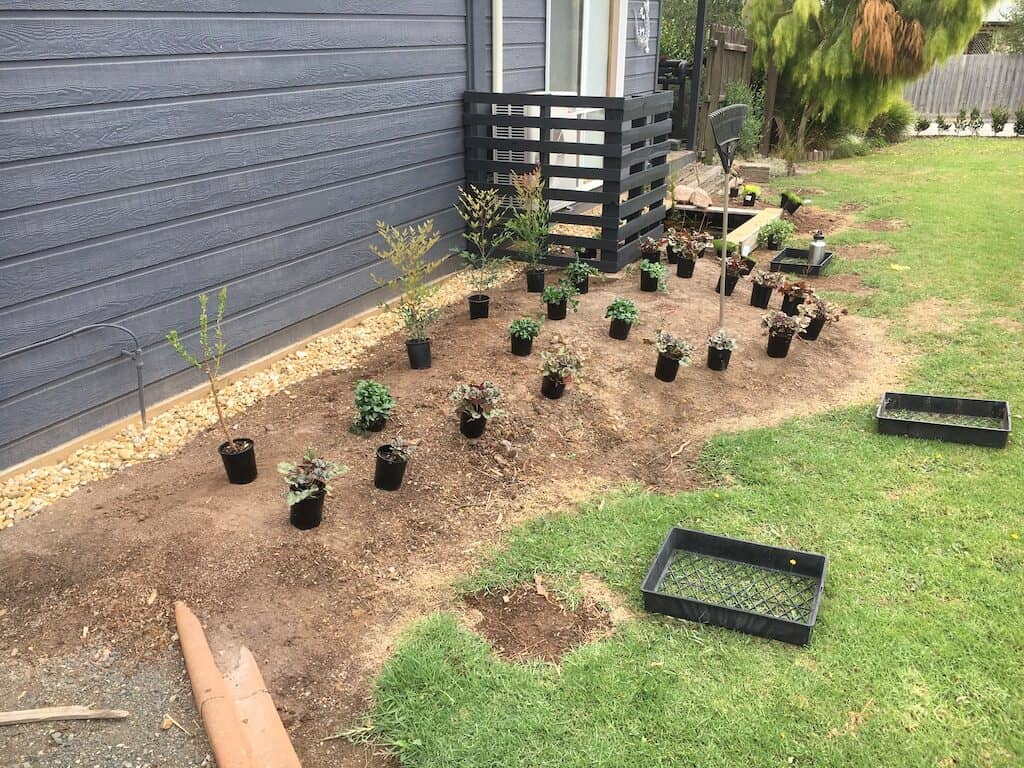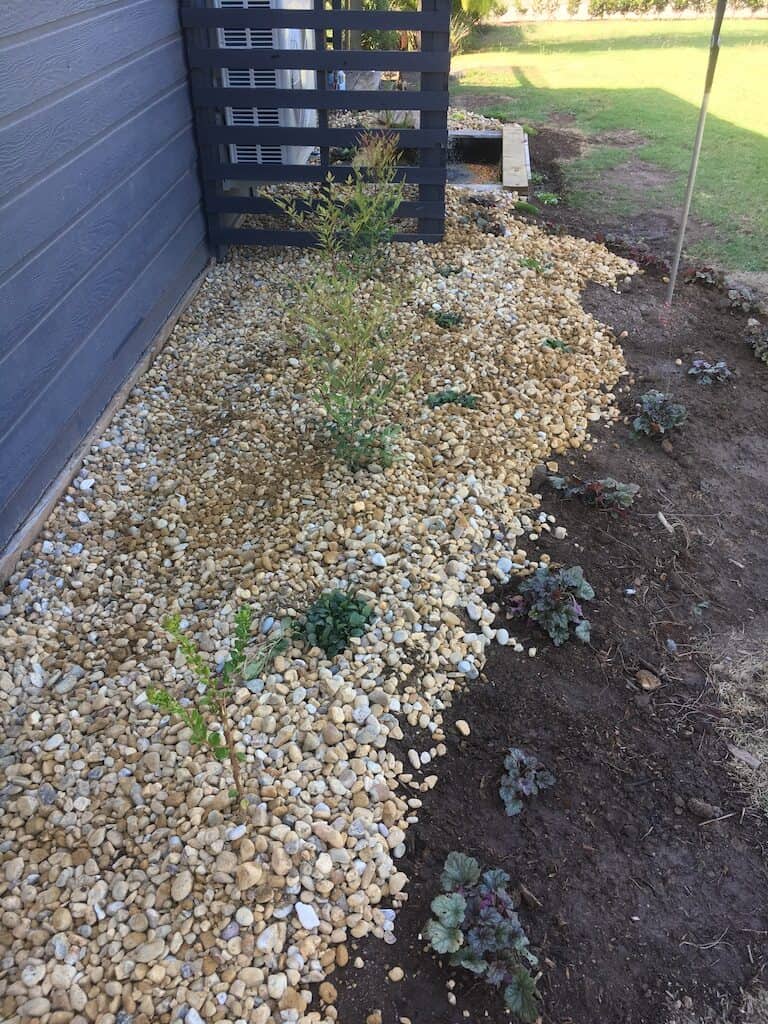Curious what is the best time of year to plant or create a garden? That’s ok your not alone. Most of people think spring is the best time of year to plant a garden……
Well yes sometimes spring is the best time of year to plant a garden. While other times it might not be best. Where you live ( your climate) will be a major factor in determining the best time of year to plant and what type of garden you want.
Some plants are seasonal and not available throughout the year and others can be heavily discounted at certain times.
In this article I will give broad advice based on differing climate zones. Feel free to scroll down to your specific situation.

These are the climate zones we will cover.
–Tropical ( You never have a frost)
–Temperate ( You sometimes get a frost but not snow)
–Cold (You receive frosts and snow)
Tropical
Tropical climates should be pretty stable in terms of temperature. There is basically two seasons. A wet and a dry.
A tropical gardener is very lucky in that they can basically plant an ornamental garden at any time of year. In the tropics even during the dry season there is still humidity in the air.
While applying water directly to plants roots is the most effective method of watering. Many plants are also able to absorb water from the air. Tropical plants are particularly adapt at this.
Planting during the wet season will allow your new plants to get established before the dry season sets in. You can also buy smaller (cheaper) plants knowing they will be well watered over the coming months.
If water is scarce in your location this will be your best time to plant our a new garden. Especially the larger plants.
During the dry season local nurseries may discount plants to save on their watering. This can allow you to pick up a bargain! Providing you have adequate water to help the new plants establish, this is a great time to buy and plant a garden.
Installing a drip irrigation system is a great and lazy way to keep a new garden watered.
As you can see there are ways to make cost savings at both times of year.
Buying during the dry season will give you larger plants at a good price, but you’ll need to spend a little more time nurturing them.
Buying during the wet season you can purchase smaller/ cheaper plants and know that the coming rains will do the heavy lifting for you.
Another option worth considering is buying the larger plants during the dry season when discounted. In most gardens there is usually less large trees and shrubs and more of the fillers (smaller growers). This way you can water the few large feature trees or shrubs and get them a start before buying the smaller fillers during the wet season.
Temperate
In a temperate climate we have a shortish winter and a longer summer. Frosts can be a problem during the winter months whilst summer temperatures can be scorching hot!
Where we live winter and spring are generally wet, while summer and autumn are very dry. Spring is a very popular time for gardeners and nurseries are incredibly busy. Generally the plants you’ll purchase in spring are quite small and full price.
My favourite time of year to plant a new garden is late summer- early autumn. I find you’ll get plenty of bargain plants during this time and of a really good size!
Planting larger plants gives instant effect. The soil is nice and warm still and the plants roots establish very fast. All that’s required is a month or two of vigilance with watering. Adding some water crystals can be helpful when planting.
Once the weather cools off theses plants will be somewhat established (more frost resistant) and the moisture in the soil should be returning. The roots will continue to develop throughout winter and then these plants will look magnificent come spring.
If however I’m shopping for fruit trees or ornamental deciduous trees winter is hands down the best time for planting! Durning the winter months these deciduous trees can be purchased “bare rooted”. This simply means without soil.
Because these trees go dormant they are able to be transported and sold without any potting soil. This makes them much cheaper, often 50% cheaper than you’ll pay during the warmer months.
These deciduous trees can then be planted straight into the garden. During the winter months they will develop some roots. Once spring comes and the days get longer and the soil warms up they will really start to take off!
It’s not uncommon to receive fruits and flowers during the first spring but don’t worry if you don’t. We usually allow one full season for the tree to full establish its root system. Once the roots are established and healthy the tree will be able to produce abundant fruit, foliage and flowers.
If your tree doesn’t sprout leaves during the first spring it not going to live. This is not a common occupancy but it is the risk of buying bare rooted trees.
So for those of you in temperate regions buying ornamentals and fruit trees during winter and planting the filler plants during late summer-early autumn will give you the most bang for your buck!
Cold
A cold climate is characterised by the longish winter and relatively short summer. Winter will see snow and frosts. In some areas the soil freezes making gardening outdoors almost impossible.
During spring the ground can become quite boggy as everything de-thaw’s. Once the soil started to heat up everything springs back to life and feels fresh and new.
In these cold climates the best time to plant is basically as soon as you can!
You’ll want to make the most of the growing season. Buying your plants and getting them in the ground will get them establishing before the summer heat.
You also want your plants established enough for the next winter so that they look magnificent at the beginnings of spring and right through the warmer months.
Bare rooted trees may also be available depending on where you live. Of course if the ground is frozen you won’t be digging a hole. Some areas will have them for sale in the early spring.
In cold climates the use of annuals can be a great way to create full and vibrant looking gardens. The cheapest way to by annuals is as seeds or in small punnets. Toward the end of the season you’ll find heavily discounted established annuals.
Watering your annuals with a liquid fertiliser is the best way to keep them looking their absolute best.
This can be handy if your planning a function or selling your house. But remember these annuals won’t come back next year. One advantage of using annuals is that every year your garden can be transformed into a different work of art! Each winter comes in a wipes the canvas clean.
Should you mulch?
In my opinion, ABSOLUTELY!
Mulch has so many benefits that you’re crazy if you don’t utilise it.
Here just a few of the benefits.
- Suppresses weed growth. A nice thick layer of mulch makes it much harder for any weeds that are buried to grow.
- As the mulch breaks down it releases organic compounds and nutrients into the soil. The plants will greatly benefit and you’ll need to use much less manufactured fertiliser.
- Reduces water loss through evaporation. Mulch provides a great physical barrier that will help lock the moisture in the soil.
- Helps establish a micro climate and environment. Organic mulch will produce gasses as it breaks down. These gasses can help provide an extra degree or two of warmth.
What type of mulch is best?
Organic
On most of our gardens we like to use organic mulch. This just means mulch from something that was alive. The most common organic mulches are mulches derived from trees and straw mulches.
A mulch derived from trees is generally nice and thick and will break down much slower than straw mulches. This makes them a good choice for larger ornamental gardens.
Tree based mulches are available from all local garden centres. You can buy online but it’s expensive by comparison. What we like to do i ring up a local arborist, they are always mulching what they cut down. You’ll pick up a large truck load very cheap.
Straw mulches break down much faster. This makes them a better choice for around faster growing plants like vegetable crops and annual flower beds.
Again this is available at all garden centres. It comes packaged form so buying online could make sense, depending on cost at your local garden supplies.
We personally like to use pea straw or sugar cane mulch on our vegetable gardens.
Inorganic
So inorganic mulches come form things that were never alive. This could be rocks or a new product made from recycled tyres- rubber mulch.
The benefits of inorganic mulches is that they will not break down over time. This is great for those that don’t want to reapply mulch every year or two.
Inorganic mulches will still help the soil retain moisture and prevent weeds. But they will not provide any nutrients back into the soil, thats the trade off.
We have used both organic mulches and inorganic mulches in our garden. In fact the garden we created this past autumn we used river rocks as the mulch.

Preparing the garden for mulch
Before adding the mulch it’s a good idea to take some weed preventative measures.
Even with the addition of mulch some stubborn weeds will still bust through. Taking some time to prepare before mulching can save problems down the road.
Do your best to remove any weeds before mulching. Doing it by hand is obviously the cheapest way but it can be really time consuming, not to mention you’ll miss hundreds of tiny ones.
Some people like to use weed mat under their mulch. Weed mat will not only kill any tiny weeds you’ve missed but it also prevents any weed seeds from germinating.
Weed mat works great but it is expensive and can be really annoying if you want to add more plants further down the line.
Another option is spraying the area with a weed killer. You can use the proven glyphosate based weed killer or try a more eco friendly weed killer. These will kill any of those tiny weeds you’ve missed.
But our favourite method is using old newspaper. It’s the cheapest way and as the paper breaks down it will provide nutrients into the soil! Provided you layer it thick it has all the benefits of weed mat.
We do hope this article has been of some help to you. If so you may like to check out some of our other helpful gardening tips over on the gardening page. Happy planting:)
